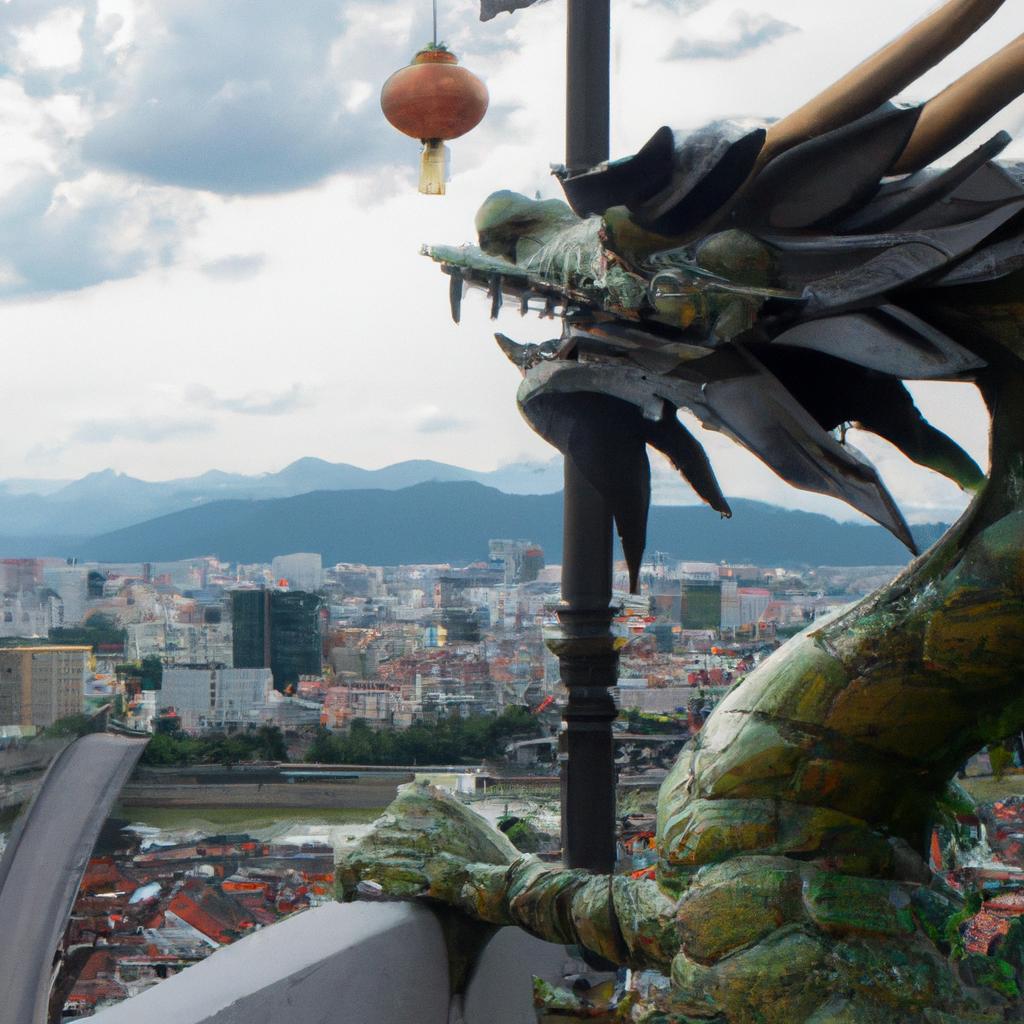Dragons Bridge, a captivating and storied monument, holds a special place in the hearts of the people of Ljubljana, the capital city of Slovenia. Renowned for its architecture, fascinating legends, and significant role in the city’s history and culture, the bridge stands as a symbol of strength, power, and resilience.
Origins and Construction of Dragons Bridge
Dragons Bridge, also known as the Zmajski Most, was constructed in 1901 by the esteemed architect Jurij Zaninovich during the expansion and modernization of Ljubljana. Inspired by the Vienna Secession movement, Zaninovich designed the bridge as a concrete arch adorned with four dragon sculptures, two on each end. The innovative concrete arch design was groundbreaking for its time and remains an engineering marvel to this day.
Role of Dragons Bridge in History
Dragons Bridge holds a significant place in the development of Ljubljana. It was built to connect the city’s two main streets, functioning as a vital transportation link for the growing population. Despite enduring the devastation caused by the 1895 earthquake and World War II bombings, Dragons Bridge stood strong. Its resilience and restoration became a symbol of hope and determination for the city and its inhabitants.
Legends and Myths Surrounding Dragons Bridge
The bridge is steeped in enchanting legends and myths that have been passed down through generations. One popular legend tells the story of Jason and the Argonauts, who are said to have battled a dragon near the bridge while in search of the Golden Fleece. Another captivating myth suggests that the dragon sculptures come alive at night, guarding the city from harm.
These tales have become an integral part of Ljubljana’s cultural heritage, shaping the identity of the community and attracting tourists from around the world. The legends add an aura of magic and mystery to the bridge, elevating it from a mere structure to a symbol of the city’s connection to its past and its enduring traditions.
Architectural Masterpiece with Unique Design
Dragons Bridge exemplifies the Secessionist architectural style, also known as Art Nouveau. The bridge’s distinctive features include the four bronze dragon sculptures, their green patina blending harmoniously with the surroundings. Reinforced concrete arches, a revolutionary material at the time, provide a lighter and more elegant design. The railings are adorned with intricate patterns of flowers and leaves, a hallmark of the Secessionist style.
The bridge’s design is an amalgamation of various architectural styles, including Art Nouveau, Historicism, and Art Deco. This fusion gives Dragons Bridge its unique and eclectic character, setting it apart from other bridges of its time.
Promoting Tourism in the Area
Dragons Bridge has long been a beloved tourist attraction, captivating visitors with its stunning architecture and legendary dragon sculptures. The local authorities have invested in initiatives and marketing campaigns to promote tourism in the area, with the bridge as a prominent feature in these efforts. It has become a symbol of the city’s inclusive and welcoming culture.
While tourism brings economic benefits to the area, it also presents challenges for the local community. Increased foot traffic can strain infrastructure and resources and impact the local environment. However, the community recognizes the importance of tourism and is actively working to strike a balance between the needs of visitors and those of local residents. Measures such as limiting the number of visitors and promoting sustainable tourism practices aim to mitigate negative impacts.
Conclusion
Dragons Bridge is not merely a physical structure but an awe-inspiring landmark with a rich history and enduring significance. Its architectural beauty and unique design have made it an iconic symbol of Ljubljana, attracting tourists from around the world. The legends and myths associated with the bridge add an element of wonder and enchantment, reflecting the city’s cultural heritage and resilience.
As an architectural masterpiece, Dragons Bridge exemplifies the power of design to shape a community’s identity. Its influence on modern bridge design and its status as a cultural heritage monument further demonstrate its significance. Despite the challenges presented by tourism, the local community strives to preserve its cultural heritage while embracing the economic opportunities it brings.
Dragons Bridge stands tall as a testament to the power of history, legends, and masterful architecture to captivate and inspire both locals and visitors. Its allure is undeniable, making it a must-see attraction for anyone seeking to explore the vibrant city of Ljubljana.
Citations:
- “Dragons Bridge, Ljubljana.” Visit Ljubljana. https://www.visitljubljana.com/en/visitors/places-to-visit/architectural-sights/dragons-bridge-ljubljana/
- “Dragons Bridge.” Ljubljana Info. https://www.ljubljana.info/dragons-bridge/



